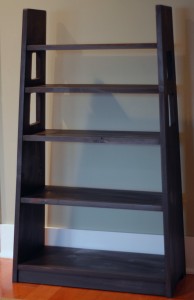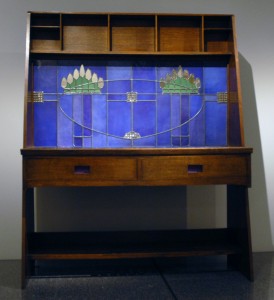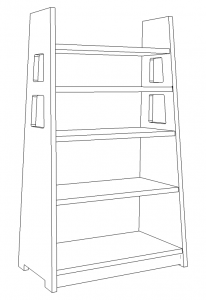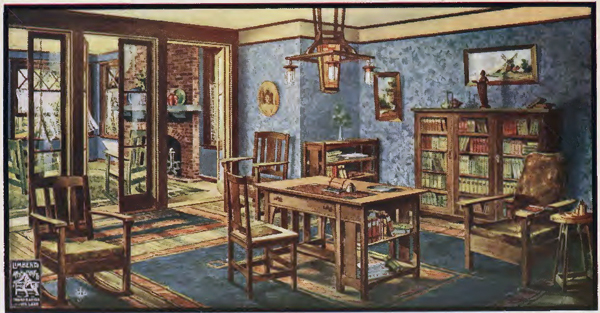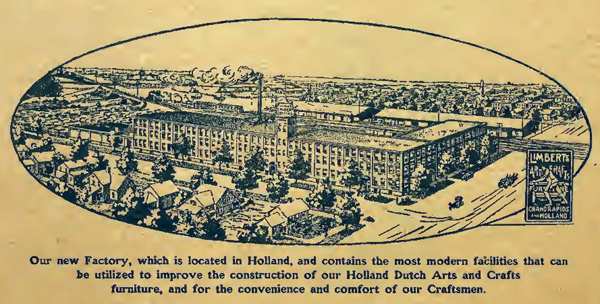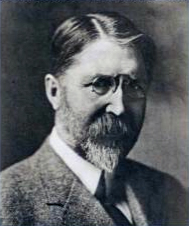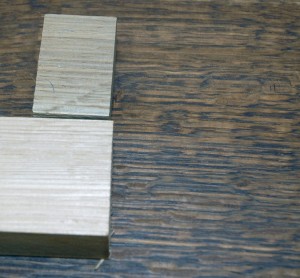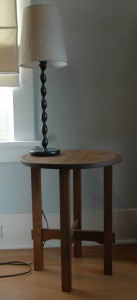I recently finished a simplified version of Limbert’s No. 346 Magazine stand (read more here) and have been thinking about variations on the design. This take is itself a variation, simplified to take advantage of dimensional stock and pocket-hole construction, but there’s more opportunity for increasing the stand’s utility.
It’s an attractive design, but the trapezoidal shape means you lose some storage at the ends of the shelves and the shelves become shallower towards the top. These limitations are the main reason I opted for a rectilinear design when building shelves for my office. Too, the short vertical spacing between the last few shelves means you won’t be putting any tall books on them. As it is though, it makes an attractive display stand or a fine shelf if you don’t own many books. If I were to build it again, I think I’d use the original depth to keep the extra width on the upper shelves. I’d also think about eliminating one of the shelves to allow for more spacing between them, a decision that entails altering the position of the cutouts in the sides. Continue reading

